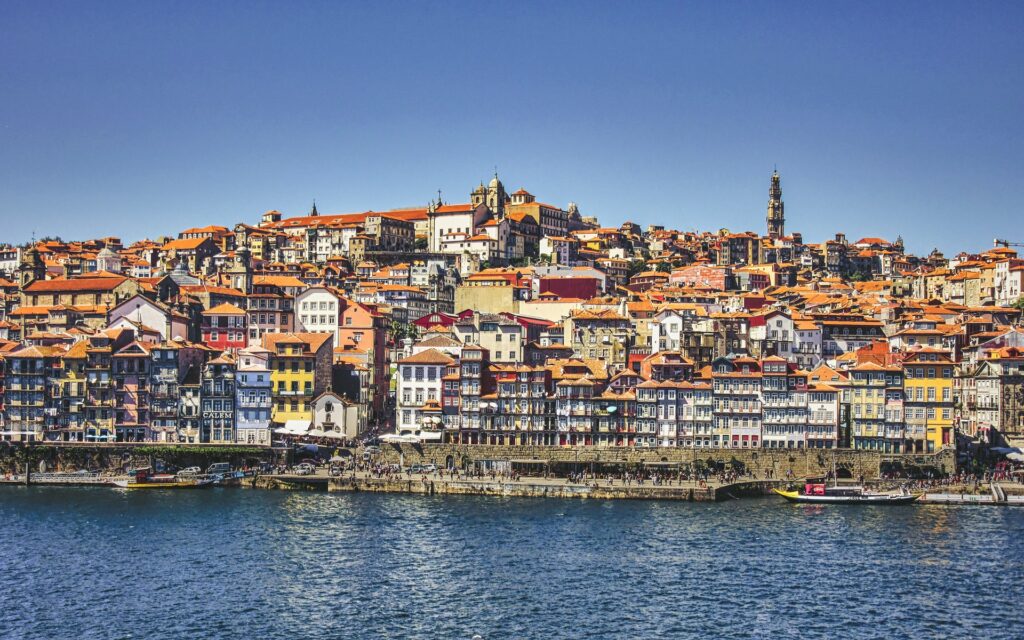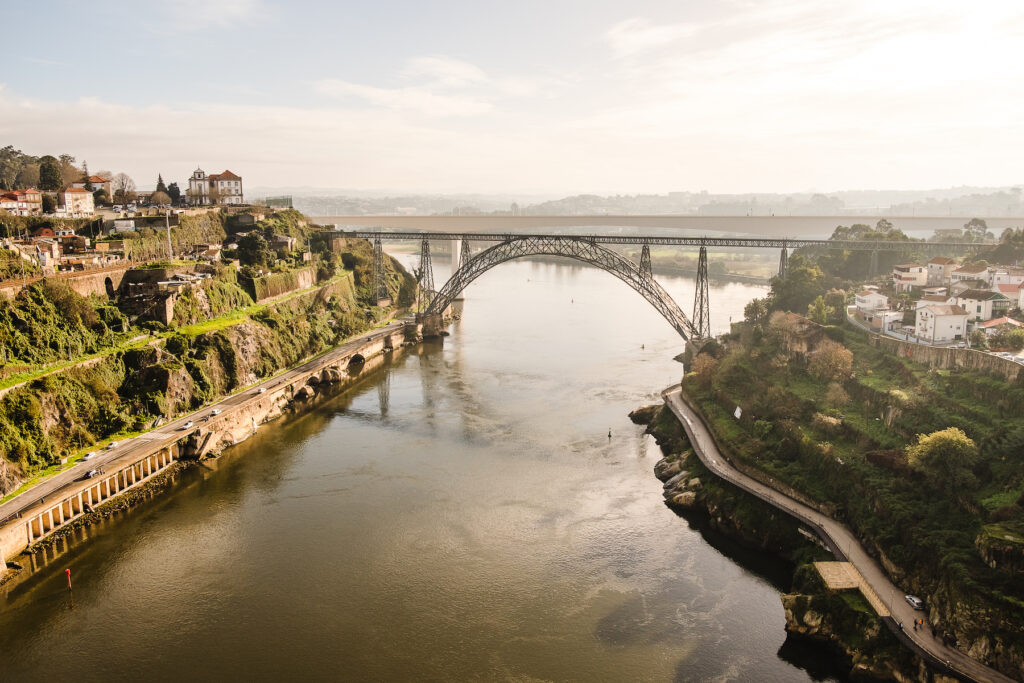Palacio da Bolsa Porto is a historical building that is located in the heart of Porto, Portugal. It was built in the 19th century by the city’s Commercial Association in a Neoclassical style and is now considered one of the most visited monuments in northern Portugal. The palace was constructed on the ruins of the Saint Francis Convent and has become the city’s drawing room, welcoming illustrious visitors such as monarchs, presidents, and ministers.
The building is a National Monument and is classified as a World Heritage Site by UNESCO. It is a symbol of the city’s rich history and is an important cultural landmark. Visitors can explore the palace’s many rooms, including the Arabian Hall, the Court Room, and the Golden Room. The palace also houses a number of art exhibitions and cultural events throughout the year, making it a must-visit destination for anyone interested in Portuguese history and culture.
Overall, Palacio da Bolsa Porto is a stunning example of Neoclassical architecture and an important cultural landmark in Porto. Its rich history and beautiful design make it a must-visit destination for anyone visiting the city.
History
Construction
Palácio da Bolsa is a neoclassical style building located in the Infante D. Henrique Square in the historical centre of Porto, Portugal. The construction of the palace began on October 6th, 1842, after the closure of the stock exchange that forced the Porto traders to discuss their business in the open air. The building was erected by the city’s Commercial Association (Associação Comercial do Porto) and was designed by architect Joaquim da Costa Lima Júnior. The construction of the palace took about 70 years to complete and was finally inaugurated in 1910.
Stock Exchange Role
Palácio da Bolsa was the headquarters of the Porto Stock Exchange until the 1990s. The palace was built to replace the previous building that was destroyed by a fire in 1832. The new building was designed to be more spacious and elegant, and it was intended to reflect the prosperity and power of the city’s merchants. The palace was also designed to be a symbol of the close relationship between the city’s commerce and the monarchy.
Historical Significance
Palácio da Bolsa is considered one of the most important historical buildings in Porto. The palace has been classified as a National Monument and is a UNESCO World Heritage Site. The building is known for its impressive architecture, which combines elements of neoclassicism and romanticism. The palace is also famous for its richly decorated interiors, including the Arabian Hall, which is considered one of the most beautiful rooms in Europe. Today, Palácio da Bolsa is used for official receptions, cultural events, and exhibitions. It is also open to the public for guided tours, which provide visitors with a glimpse into the history and culture of Porto.
Architecture
Palácio da Bolsa is a historical building in Porto, Portugal. The palace was built in the 19th century by the city’s Commercial Association in Neoclassical style. The palace features neoclassical architecture inspired by the palaces of Renaissance Italy. It was designed by Joaquim da Costa Lima, a Portuguese architect who combined various architectural styles, including Gothic, Baroque, and Moorish, to create a unique and striking edifice.
Neoclassical Style
The Neoclassical style of architecture is characterized by its use of classical forms, such as columns, pediments, and symmetrical compositions. The style was popularized in the 18th century and was used extensively in the design of public buildings, such as palaces, museums, and government buildings. The Palácio da Bolsa is an excellent example of Neoclassical architecture, with its grand façade and ornate interior.
Interior Design
The interior of the Palácio da Bolsa is just as impressive as its exterior. The palace features a grand staircase, ornate ceilings, and intricate woodwork. The walls are adorned with paintings and sculptures, and the floors are made of beautiful marble. The interior design of the palace is a testament to the wealth and power of the city’s Commercial Association.
Arab Room
One of the most impressive rooms in the Palácio da Bolsa is the Arab Room. The room was designed to impress foreign dignitaries and is a beautiful example of the Moorish influence on Portuguese architecture. The room features intricate woodwork, ornate plasterwork, and beautiful stained glass windows. The Arab Room is a must-see for anyone visiting the Palácio da Bolsa.
In conclusion, the Palácio da Bolsa is an excellent example of Neoclassical architecture and is a must-see for anyone visiting Porto. The palace’s grand façade, ornate interior, and impressive Arab Room make it one of the city’s top tourist attractions.
Tours and Visits
Public Access
The Palacio da Bolsa in Porto is open to the public for visits. Visitors can enjoy the stunning architecture and history of the building. The opening hours are from 9:00 a.m. to 6:30 p.m. daily. The entrance fee for adults is €12, while students, schools, and seniors can avail of a discount and pay €7.5. Children up to 12 years of age can enter for free when accompanied by adults.
Guided Tours
The best way to explore Palacio da Bolsa is through a guided tour. The tour lasts for around 30 minutes, and visitors can learn about the history and significance of the building. The tour is available in Portuguese, Spanish, French, and English, and the language is booked according to the order of arrival. The guided tour fee is €7, and there is a discount available for Porto Card holders, making the price €4.50. People aged over 65 can also avail of a discount and pay €4.
Visitors can also book tours and activities through GetYourGuide, which offers a range of options, including a Porto Card with transportation, valid for 1, 2, 3, or 4 days. The card includes up to 150 discounts and benefits, such as free entrance to 7 city museums and 20% off cruises on the Douro River.
Cultural Events
Palácio da Bolsa is not only a historical monument but also a cultural hub in Porto. The palace hosts various cultural events throughout the year, including concerts, performances, and exhibitions.
Concerts and Performances
Palácio da Bolsa hosts a variety of concerts and performances throughout the year. The palace’s grand halls provide a unique and elegant setting for classical music concerts, operas, and ballet performances. The palace’s Arab Hall, in particular, is known for its excellent acoustics and is a popular venue for chamber music concerts.
In addition to classical music performances, the palace also hosts jazz and world music concerts. The palace’s courtyard is transformed into an outdoor concert venue during the summer months, providing a relaxing and enjoyable atmosphere for music lovers.
Exhibitions
Palácio da Bolsa also hosts a variety of exhibitions throughout the year, showcasing the work of both local and international artists. The palace’s grand halls provide a unique and elegant setting for art exhibitions, and the exhibitions are often curated to complement the palace’s historical and architectural features.
The palace’s exhibitions feature a variety of art forms, including painting, sculpture, and photography. The exhibitions often focus on contemporary art, but the palace also hosts exhibitions that showcase the work of historical artists.
Overall, Palácio da Bolsa is a must-visit destination for culture lovers in Porto. The palace’s cultural events provide a unique and unforgettable experience, and the palace’s historical and architectural features make it a truly special venue.
Location and Accessibility
Palacio da Bolsa is located in the historical center of Porto, Portugal, on Infante Dom Henrique Square. It is a National Monument and a UNESCO World Heritage Site. The palace was built by the Porto Commercial Association on the ruins of the Saint Francis Convent.
Getting There
There are several ways to reach Palacio da Bolsa. Visitors can take a taxi, bus, or metro. The palace is about 20 minutes away from the airport by car. The nearest metro station is São Bento, just a few minutes’ walk away.
Nearby Attractions
Palacio da Bolsa is located in the heart of the city, close to many other attractions. Visitors can explore the historic Ribeira district, take a stroll along the Douro River, or visit the iconic Clérigos Tower. The Sao Francisco Church, which is adjacent to the palace, is also a popular attraction.
Overall, Palacio da Bolsa is easily accessible and conveniently located near many other tourist destinations in Porto.
Frequently Asked Questions
How can I purchase tickets for the Palácio da Bolsa?
Tickets for the Palácio da Bolsa can be purchased online or at the entrance. It is recommended to purchase tickets in advance to avoid long lines and ensure availability.
Are there any dining options available inside the Palácio da Bolsa?
Yes, there is a restaurant inside the Palácio da Bolsa that offers traditional Portuguese cuisine. The restaurant is open for lunch and dinner, and reservations are recommended.
What is the cost of admission to the Palácio da Bolsa?
The cost of admission to the Palácio da Bolsa is €10 per person for a self-guided tour. Guided tours are also available for an additional fee. Discounts may be available for students, seniors, and groups.
Can you tell me about the guided tours at the Bolsa Palace?
Guided tours of the Palácio da Bolsa are available in multiple languages and provide a more in-depth experience of the palace’s history and architecture. Visitors can choose from a variety of tours, including a general tour, a historical tour, and a tour focused on the Arab Room.
What are the opening hours for the Palácio da Bolsa?
The Palácio da Bolsa is open daily from 9:00am to 6:30pm. However, the last admission is at 5:30pm. The palace may be closed on certain holidays, so it is recommended to check the website or call ahead for updated hours.
What is special about the Arab Room in the Palácio da Bolsa?
The Arab Room is one of the most stunning rooms in the Palácio da Bolsa, featuring intricate Moorish-inspired design and a stunning chandelier. The room was designed to impress visitors and showcase the wealth and power of Porto’s commercial elite. It is a must-see for anyone visiting the palace.


